Turn it into an anime and not even Heike Monogatari is immune to the curse of filler.
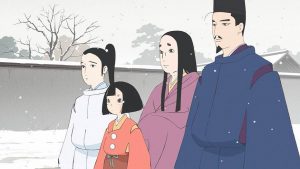 I always knew that Heike Monogatari in this form was going to be a difficult series for me to process, intellectually and emotionally. Yet however much I tried to prepare myself there was really no preparing for it – the reality of seeing this rare example of literary perfection filtered for a modern anime audience is pretty brutal. To use a metaphor (which is the best I can do to capture the feeling), the anime is like an exquisite beauty that’s had an ill-advised layer of heavy makeup applied to it. The inherent beauty is so great that you can still see it under all that pancake, but your eyes can’t ignore the reality of what’s in front of you.
I always knew that Heike Monogatari in this form was going to be a difficult series for me to process, intellectually and emotionally. Yet however much I tried to prepare myself there was really no preparing for it – the reality of seeing this rare example of literary perfection filtered for a modern anime audience is pretty brutal. To use a metaphor (which is the best I can do to capture the feeling), the anime is like an exquisite beauty that’s had an ill-advised layer of heavy makeup applied to it. The inherent beauty is so great that you can still see it under all that pancake, but your eyes can’t ignore the reality of what’s in front of you.
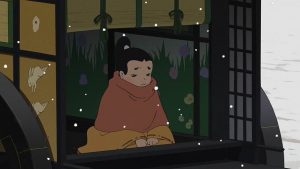 When you have about 60 episodes of spectacular material to try and shoehorn into 11 episodes, why is your immediate impulse to add a bunch of original filler? It’s almost comedic to describe Heike Monogatari in regular anime terms, but the effect is exactly the same as when adaptations change great manga material. The anime-original stuff generally isn’t nearly as good as the source and guess what, that’s exactly what we have here. As well, while I enthusiastically appreciate stories of female empowerment, the Heian era already has two brilliant classics written from that perspective in Genji Monogatari and The Pillow Book. Why was it necessary to twist Heike Monogatari into that form too, when in reality it’s a very different sort of story?
When you have about 60 episodes of spectacular material to try and shoehorn into 11 episodes, why is your immediate impulse to add a bunch of original filler? It’s almost comedic to describe Heike Monogatari in regular anime terms, but the effect is exactly the same as when adaptations change great manga material. The anime-original stuff generally isn’t nearly as good as the source and guess what, that’s exactly what we have here. As well, while I enthusiastically appreciate stories of female empowerment, the Heian era already has two brilliant classics written from that perspective in Genji Monogatari and The Pillow Book. Why was it necessary to twist Heike Monogatari into that form too, when in reality it’s a very different sort of story?
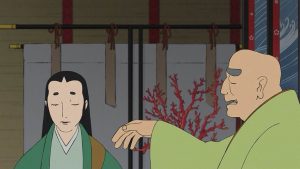 This is where we are, then. The essence of the story is off, and a lot of the details are messed up too. For example, Kiyomori as a buffoon being dragged around by the ear by his wife. Kiyomori was a vainglorious man occasionally given to poor decisions based on overconfidence, and he was indeed much taken with dancers and fickle in his affections. But he was a deeply cunning, brilliant, and serious man – he should tower over this first part of the story as a larger than life figure, not be a source of comic relief. Unwise creative decisions like that are, frankly, hard to overlook.
This is where we are, then. The essence of the story is off, and a lot of the details are messed up too. For example, Kiyomori as a buffoon being dragged around by the ear by his wife. Kiyomori was a vainglorious man occasionally given to poor decisions based on overconfidence, and he was indeed much taken with dancers and fickle in his affections. But he was a deeply cunning, brilliant, and serious man – he should tower over this first part of the story as a larger than life figure, not be a source of comic relief. Unwise creative decisions like that are, frankly, hard to overlook.
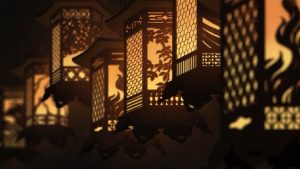 With respect to Aoi Yuuki, who I adore as a seiyuu and is doing the best with what she’s been given, Biwa is the pancake makeup in this metaphor. The series doesn’t need her and is doesn’t need the sappy narrative crutch she provides. Everything with she and Tokuko, her mother (complete asspull of a plot twist there), and the seeing the future hokum is a distraction and nothing more. The message it sends, frankly, is that Yoshida and Yamada decided they were unable (or unwilling) to try and honestly adapt the story in the time provided, and just punted.
With respect to Aoi Yuuki, who I adore as a seiyuu and is doing the best with what she’s been given, Biwa is the pancake makeup in this metaphor. The series doesn’t need her and is doesn’t need the sappy narrative crutch she provides. Everything with she and Tokuko, her mother (complete asspull of a plot twist there), and the seeing the future hokum is a distraction and nothing more. The message it sends, frankly, is that Yoshida and Yamada decided they were unable (or unwilling) to try and honestly adapt the story in the time provided, and just punted.
 As for the titular Heike themselves, they aren’t faring any better than their patriarch (I cannot grasp that someone could look at this story and think “let’s make the Heike minor supporting characters!” is a good idea). Shigemori is a shadow of the original, a timid and hesitant man literally afraid of the dark. Sukemori is a simple brat, and Miyu Irino is wasted as this version of Koremori, who’s given nothing more important to do than pine after Biwa and be jealous of her visits to his sister. All of them should be striking and memorable characters but especially Shigemori, who was indeed the “conscience of the Taira” but not because he fretted and dithered helplessly over his father’s excesses. What a shame.
As for the titular Heike themselves, they aren’t faring any better than their patriarch (I cannot grasp that someone could look at this story and think “let’s make the Heike minor supporting characters!” is a good idea). Shigemori is a shadow of the original, a timid and hesitant man literally afraid of the dark. Sukemori is a simple brat, and Miyu Irino is wasted as this version of Koremori, who’s given nothing more important to do than pine after Biwa and be jealous of her visits to his sister. All of them should be striking and memorable characters but especially Shigemori, who was indeed the “conscience of the Taira” but not because he fretted and dithered helplessly over his father’s excesses. What a shame.
 And a shame is what it is, too. Not just because the original is one of the greatest stories ever told, but because there’s so much talent on display in the anime. It does look quite beautiful even if the budget is clearly modest – Yamada is a formidable talent and that too shines through the missteps. And again, under the Pennywise cosmetics you can see elements of what makes this such a gripping tale. The court politics, for example. The cloistered* emperor Goshirakawa – a devotee of Imayo, Heikie-era pop songs – is in a tug-of-war with Kiyomori, too clever old men very good at making others bend to their will. Tokuko is betrothed to his 10 year-old son, Norihito – who would become Emperor Takakura – in a dramatic tangle of these two great men’s fates and legacies.
And a shame is what it is, too. Not just because the original is one of the greatest stories ever told, but because there’s so much talent on display in the anime. It does look quite beautiful even if the budget is clearly modest – Yamada is a formidable talent and that too shines through the missteps. And again, under the Pennywise cosmetics you can see elements of what makes this such a gripping tale. The court politics, for example. The cloistered* emperor Goshirakawa – a devotee of Imayo, Heikie-era pop songs – is in a tug-of-war with Kiyomori, too clever old men very good at making others bend to their will. Tokuko is betrothed to his 10 year-old son, Norihito – who would become Emperor Takakura – in a dramatic tangle of these two great men’s fates and legacies.
 The other key components in the drama – like the rise of power of the Enryakuji warrior monks (itself a wedge between the cloistered emperor and Kiyomori), the important role of the Shirabyoushi (precursors of the Geisha) – most famously Gio and Shizuka Gozen – in Heian court life (and Kiyomori’s affections) – are given lip service here in a checklist sort of way. But like so much of the original essence of Heike Monogatari, they’re deprived of much oxygen as the narrative is twisted into an almost but not quite unrecognizable form. I wish the people behind this series had more faith in their audience – but for all I know perhaps it would have been misplaced. The balance between what’s good about this show and what might have been may shift from episode to episode, but this week it was severely tilted in favor of the latter.
The other key components in the drama – like the rise of power of the Enryakuji warrior monks (itself a wedge between the cloistered emperor and Kiyomori), the important role of the Shirabyoushi (precursors of the Geisha) – most famously Gio and Shizuka Gozen – in Heian court life (and Kiyomori’s affections) – are given lip service here in a checklist sort of way. But like so much of the original essence of Heike Monogatari, they’re deprived of much oxygen as the narrative is twisted into an almost but not quite unrecognizable form. I wish the people behind this series had more faith in their audience – but for all I know perhaps it would have been misplaced. The balance between what’s good about this show and what might have been may shift from episode to episode, but this week it was severely tilted in favor of the latter.
*It should be noted by way of explanation that “retired” emperors – cloistered in the lingo of the day – were former emperors who retired to monasteries but retained the political powers of the office. Their successors were basically ceremonial figureheads. All this was by design and was the de facto division of power for the last century of the Heian Period. As such, Goshirakawa is theoretically the most powerful man in Japan – which explains his intense interest in Taira no Kiyomori’s machinations. And that, really, is the basis of everything that happens in Heike Monogatari.


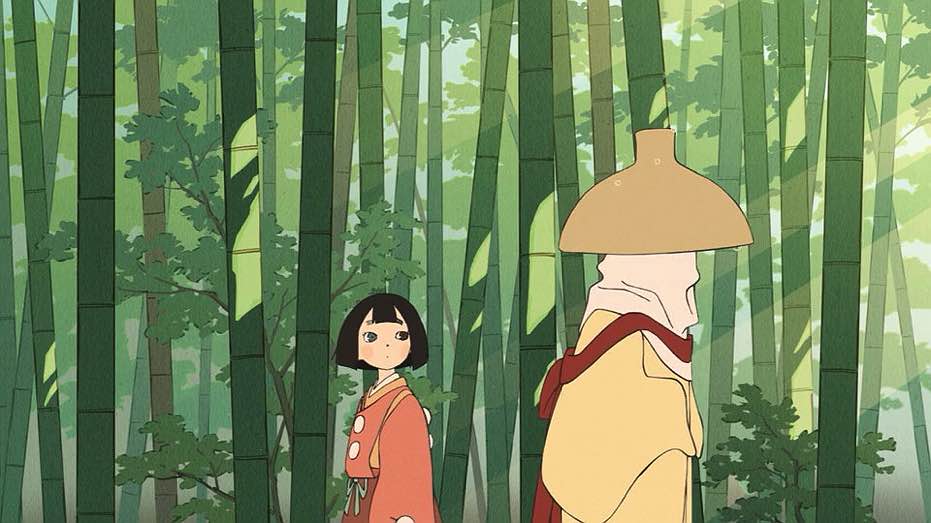
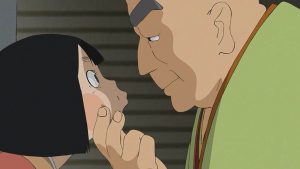


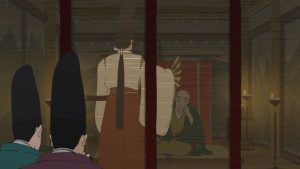
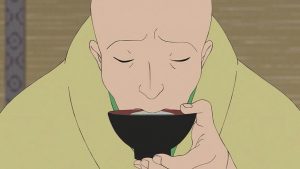
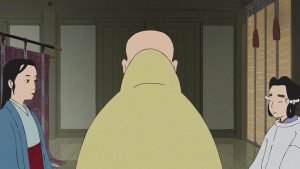

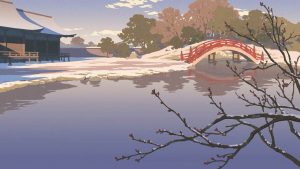

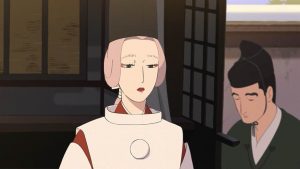
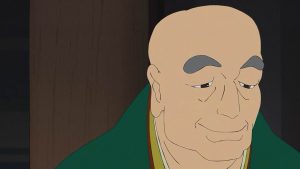
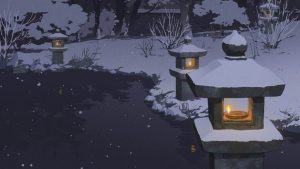


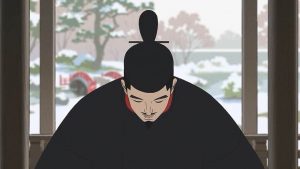
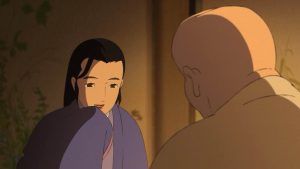
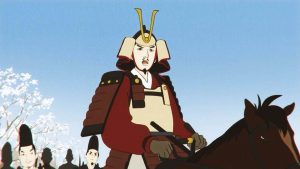

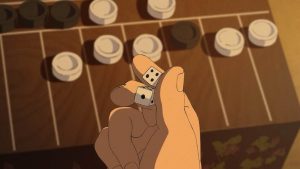
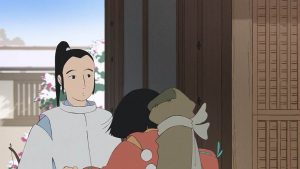

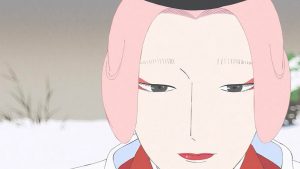
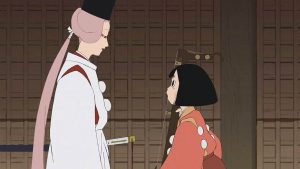
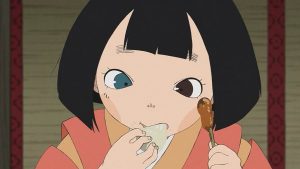

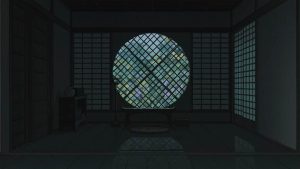

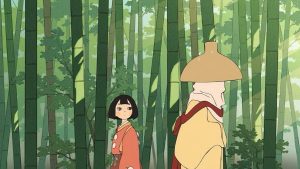
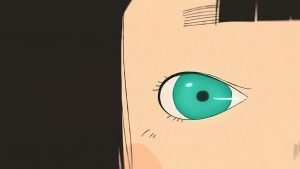


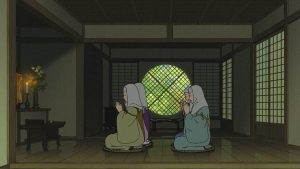


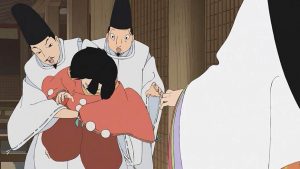
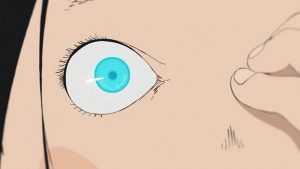


leongsh
September 23, 2021 at 9:00 pmThis episode showed one of my favourite temples in Kyoto – Gio-ji at Arashiyama. Yes, that very same temple that Gio retired to seclusion with as a nun with her mother and sister. That circular window in the small temple is so distinctive. It’s a small temple cum house. The main draw is the moss garden that the temple has – the lesser known moss garden in Kyoto but has a charm, serenity and beauty all its own.
Guardian Enzo
September 23, 2021 at 10:00 pmYes, Gio-JI is a lovely temple and that moss garden is very beautiful. Jakko-in in Ohara also has a beautiful moss garden and ironically, also a Taira connection via it being a nunnery. Much more tragic though.
Too bad the actual content of the episode wasn’t as authentic.
leongsh
September 24, 2021 at 12:31 amWas supposed to go to Ohara to stay at the Minshuku Ohara Sansou (https://www.ohara-sansou.com/index_e.php) on one of my trips to Japan but due to my travel partner preferring a more relaxed last few days of the itinerary, stayed in Kyoto city proper. In that trip, we had done a few days of Hida- Takayama, stayed overnight at a gassho-zukuri in Ainokura, wandered all around Kanazawa, and was in Kyoto in the last leg of trip for the Arashiyama Hanatoro Festival. Thought of squeezing an overnight at the Minshuku Ohara Sansou but decided it was too packed a trip. It was also fortunate because I had a sore ankle when we arrived at Kyoto. Travel partner joins me on trips around Japan to try places which his family (wife and kids) may not be interested in or test run some places so that if he does travel there with his family, he knows what to expect.
BBOvenGuy
September 24, 2021 at 11:36 amWhen I was in college, I took a class in the Arthurian legend, tracing how each era through the centuries reinterpreted the story in their own terms and to fit their own times. I found it fascinating. And this was in the 80s, when Marion Zimmer Bradley and Monty Python were the latest renditions. There have been more since then. Mind you, I don’t like every variation, but I welcome the attempts.
(Actually, I don’t think you can be happy as a Doctor Who fan for every long if you don’t take a similar attitude, since the show reinvents itself once or twice a decade…)
The folks at Anime Feminist have also noticed the modern additions to this version of the anime, but they have a different reaction to it. Here’s their take: https://www.animefeminist.com/the-heike-story-episode-1/
Guardian Enzo
September 24, 2021 at 11:46 amI was a huge Doctor Who fan for a long time, but I think that comparison is a huge stretch. It’s implicit in the character that it’s reinvented every few years. And you’re talking about original material, not adapted.
BBOvenGuy
September 24, 2021 at 3:20 pmA stretch for Doctor Who yes, but not for King Arthur, I suspect. I haven’t read the source material for Heike, though, so that’s still just a suspicion.
Guardian Enzo
September 24, 2021 at 3:33 pmThe thing about the Arthurian legends, though, is that there was never a definitive version of them in any form. Like the Heike they existed in oral form at first but unlike it, they were never compiled in any one written form which is considered definitive or especially accurate. In effect any interpretation of them is as valid as any other. They’re also based on events which are not part of written history – truly legends, to the point where not every historian even agrees that Arthur even existed as a single person, much less who he was. The events of the Heike, by contrast, and well-chronicled events in Japanese history.
Again, apples and oranges really.
Panino Manino
September 26, 2021 at 3:28 amI disagree with you.
That Biwa exists is “self explanatory” (IMHO), her character is almost a metaphor for the storytelling that originally told those stories trough poems and songs sang by biwa player and others. Her ability to see the future is like hindsight from the artist that it’s telling the story.
I really know how annoying this can be but I don’t think the goal here is to tell the Tale of the Heike in anime form (that’s why it’s airing first here?), it’s just inspired by and it’s more concerned with what the events mean for the semi fictional characters involved. I thought the episode was beautiful in it’s own way.
Knowing what that vision about Tokuko’s future actually means I can see a lot of funny irony for Biwa.
A-yasai
September 27, 2021 at 3:51 pmThe following is a machine translation of a text written in Japanese.
I am positive about this alteration by the anime. The Heike Monogatari has branched out into many variations in the process of being handed down to the next generation, and even in the medieval and early modern periods, adaptations were made to suit the values of the times, and I don’t mind if this work is one of them. It is true that I often feel the same way as described in this article when I watch an anime adaptation of a work that has an original story. However, for example, even if the original Shakespeare play is of high value, I don’t think it’s effective as a visual work to animate it as if it were a direct copy of the original, although I personally would like to see that. Whether this adaptation will work or not is yet to be determined, but I think it’s at least worth the challenge.
There are other reasons as well. Unfortunately, there is a strong tendency in Japanese politics to maintain old-fashioned and gendered values, and this has become more apparent in recent years. In this sense, I think it is significant to create a work that dares to add a feminist twist to the classic literature about men’s political struggles at this time.